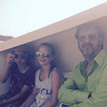Please correct me if I'm wrong about 75mm APO-Summilux-M ASPH f/1.4
-
Recently Browsing 0 members
- No registered users viewing this page.
-
Similar Content
-
- 2,474 replies
- 263,231 views
-
- 17 replies
- 732 views
-
- 52 replies
- 8,818 views
-
- 12 replies
- 1,081 views
-
- 4 replies
- 980 views
-



Recommended Posts
Join the conversation
You can post now and register later. If you have an account, sign in now to post with your account.
Note: Your post will require moderator approval before it will be visible.